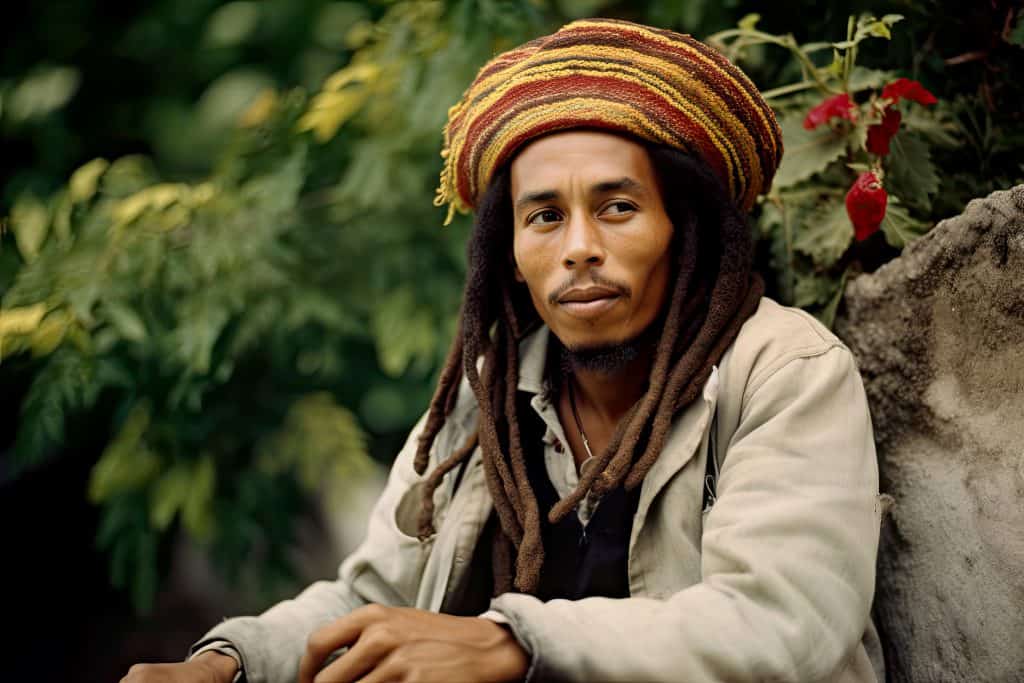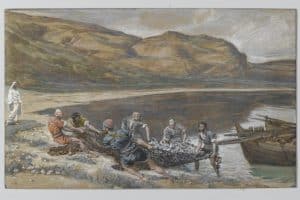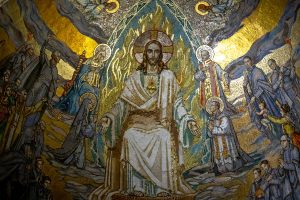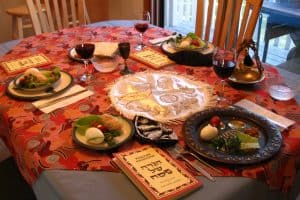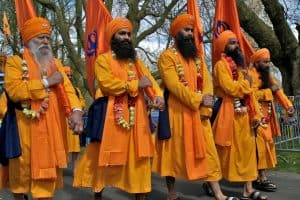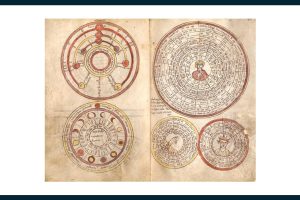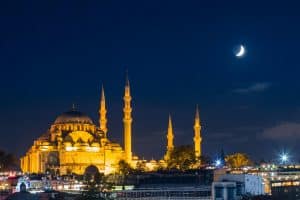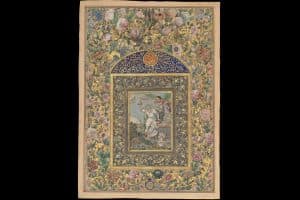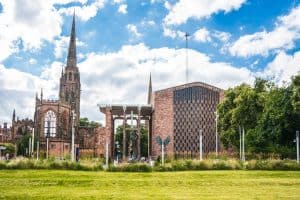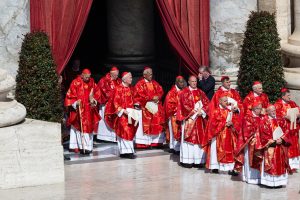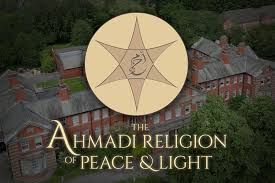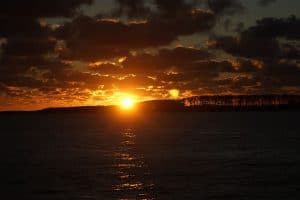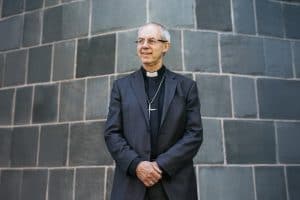By Nsofwa K. Nwannadi
Bob Marley: One Love, the film celebrating the life of the reggae icon is at the top of the box office charts. Kingsley Ben-Adir’s portrayal of the legendary singer songwriter chronicles his revolutionary music and interwoven messages of justice, ending oppression, standing up for rights and, famously, “One Love”, which is at the heart of his spirituality. He was a devout Rastafarian, a faith and political movement that inspired a generation of reggae musicians and followers. Rastafari is a relatively young religion, yet its influence on music, pop culture, politics and social justice makes it a faith system that has had a global impact despite having relatively few followers, an estimated one million worldwide. The 2021 Census reported 6,000 followers in the UK
What is Rastafarianism?
Rastafarianism, or Rastafari, can source its origins back to Marcus Garvey (1887-1940), the Jamaican-born activist and Pan-Africanist leader. He aimed to unify and connect people of African descent and bring social change to Jamaica, an island reeling from the trauma and ramifications of the transatlantic slave trade.
Garvey told supporters: “Look to Africa where a black king shall be crowned. He shall be the redeemer.” This declaration soon became the foundation of the Rastafari movement and turned Garvey into one of the religion’s prophets, with his principles and ideals heavily shaping the Rastafarian philosophy.
Rastafarianism was followed by the descendants of enslaved people fighting for emancipation in Jamaica who rejected the colonial ideology that placed black people as the subordinate race. Followers challenged Christianity and the oppressive rule of white colonial powers during the transatlantic slave trade. The Caribbean had a long history of resistance to slavery, including a 17th-century revolt by the maroons (translated from the French as “runaway black slave”) who often employed indigenous African spirituality and religion.
Who was Haile Selassie?
After Garvey’s prophecy of a black king, many of his supporters believed that the newly crowned emperor of Ethiopia, His Imperial Majesty Haile Selassie I, a monarch who traced his roots back to King Solomon and the Queen of Sheba, was the messiah in question.
The Ethiopian emperor was born Ras Tafari on 23 July 1892 and took the royal name Haile Selassie at his coronation in 1930. For Rastafarians, he is God (or Jah) incarnate, the messiah who would redeem black people exiled and separated from Africa by the slave trade. His crowning signalled that the day of deliverance was imminent, and believers would have to prepare themselves for an exodus to Africa.
Five years after the emperor’s coronation, Ethiopia was invaded by Benito Mussolini’s fascist forces and a year later the capital, Addis Ababa, fell to the Italian invaders. Emperor Selassie fled his homeland and in August 1936 arrived as a refugee in the city of Bath by train from London. He and his family moved to Fairfield House, on the city’s outskirts, and lived there until 1941.
When the emperor left England, he donated Fairfield House to the city of Bath. It is now a multi-community space for the city’s Caribbean, Indian, British and Chinese communities and a place of pilgrimage for Rastafarians.
Beliefs
Rastas refer to God as “Jah”, a shortened form of the biblical Yahweh or Jehovah. It is believed that Jah is the spirit that has been manifested in such figures as Moses, Jesus, and Haile Selassie I. Many Rastas believe that Jah can be manifested in all people through the invocation of the phrase “I and I”, referring to the togetherness of Jah and every human: that God is within us all. In early Rastafarianism, the phrase was reserved for black people as a form of rejection of the subjugated status they were given as the descendants of enslaved people.
With this, Rastafarians viewed black people as the reincarnation of the biblical Israelites, making them God’s chosen people who had been enslaved and exiled to Babylon (Jamaica). For Rastas, Babylon represents a white colonial system and stands for evil. They believe Rastafarians will one day be freed from Babylon through the return to the promised land of Zion, which many believe is Ethiopia, or Africa in general.
Practices
Though followers of Rastafari do not congregate in a specific religious building specifically for worship, Rastas celebrate and practise their faith by gathering in groups at “reasoning” sessions. These meetings are usually held once a week either in a home or community centre allowing followers to take part in chanting, singing and prayer.
Discussions about community issues are also held in sessions called “grounding”, which essentially refers to sitting down to share ideas with a political and educational intent. Groundings are also referred to as Nyabinghi, where the Nyabinghi drum — named after a legendary woman of the 18th or 19th century — is played and accompanied by dancing, adulation and celebration.
The term Nyabinghi originally denoted a resistance to colonialism and in Jamaica meant “death to the black and white oppressors” before its association with the Rastafarian ceremony.
Marijuana
Followers of Rastafari believe the use of marijuana, known as ganja, is spiritual and that the “holy herb” stimulates a meditative state, bringing them closer to Jah. Followers say a prayer before taking part in the ritualistic act, often using a pipe that is referred to as a “chalice”, drawing parallels to communion in Christianity.
The sacramental use of ganja is deemed as a purifying deed, but each Rasta must decide whether it is an essential element of their own spiritual journey.
Rastafarians say they have faced decades of persecution, racial profiling and imprisonment for their ritualistic use of marijuana. The substance has been illegal in Jamaica since the 1913 Ganja Law, a prohibition supported by evangelical churches and white elites. Possession of small amounts was reduced to a petty offence in 2015. Rastafarians in Jamaica may use it for religious purposes.
Last year, the twin islands of Barmuda and Antigua granted Rastafarians the right to grow and smoke marijuana. The islands, which gained independence from the UK in 1981, remain in the British Commonwealth. Prime minister Gaston Browne said: “We pride ourselves as an all-inclusive government, and we believe that we have to provide a space for everyone at the table, irrespective of their religion, whatever denomination, whatever faith they may practise.”
Marijuana or cannabis is a Class B drug in the UK and possession carries a maximum sentence of five years in prison or an unlimited fine.
Dreadlocks
The distinctive dreadlock hairstyle can be traced to ancient Africa, specifically to Kenyan soldiers in Kemet and Nubia. Rastafarians also believes that the Bible highlights the sanctity of dreadlocks, with many references to “locks” in the Old Testament, especially in the story of Samson, a Nazarite in the Book of Judges who has superhuman strength. Rastas also relate to the Nazarite vow — a dedication to God — described in the Book of Numbers, with some followers letting their hair grow and lock in a practice followers believe brings them closer to Jah.
Like smoking marijuana, the hairstyle caused many Rastas to be ostracised from Jamaican society. Rastas were brutalised by police, and discriminated against in education and healthcare, pushing many devotees to rural parts of Jamaica where they adapted to a more protected way of life, galvanised by a sustainable, greener, refined and off-the-grid way of life.
In the UK, the report, Shades of Grey, commissioned by the West Midlands police in 1977, was thought to have been instrumental in creating, as the journalist Derek Bishton notes, “the popular sentiment that black people were much more predisposed to criminality and that it was their culture which produced this behaviour”. The report married “hardcore dreadlocks” with “a criminalised sub-culture” and suggested that the Rastafari community posed a constant threat to “the peace of individual citizens”. It hinged on a thinly defined and spurious characterisation of Rastafarians as a criminal enterprise, rather than a spiritual movement.
In 2017, a 12-year-old, Rastafari boy in southwest London was sent home from school and told not to return until he cut off his dreadlocks because they did not comply with the school’s uniform and appearance policy. The boy was soon allowed to return after supporters protested outside the school and legal action was funded by the Equality and Human Rights Commission.
Rastafarian diet
Many Rastafarians follow an Ital diet, natural food free from additives, chemicals, and most meat. However, many people who are not directly in the movement have adopted this way of eating to improve their health and to take on a more sustainable way of living — making it more of a lifestyle choice than a religious one.
Ital comes from the Rastafari spiritual concept of livity, the belief that an energy or life force, given by Jah, flows through all living things. The main goal of adhering to an Ital diet is to increase liveliness: what is put into your body should enhance livity rather than reduce it. Food should be natural, pure, and from the earth and many followers avoid meat. Some also consider dairy not fit for human consumption.
Rastafari in pop culture
The most notable, global representation of Rastafarianism is the musician Bob Marley (1945-81), who was instrumental in bringing Rastafari philosophy and messages to the masses through his electrifying performances.
Marley once explained: “Rastafari is not a culture, it’s a reality”, and embodied the Rasta philosophy of black liberation, togetherness with Africa, freedom and love through titles including Redemption Song, Buffalo Soldier, Exodus, and One Love. The sound and spiritual message were also propelled by Peter Tosh and Bunny Wailer, Marley’s former bandmates, a musical collective that permeated Africa, producing musicians including Rocky Dawuni, Tiken Jah Fakoly and Lucky Dube.
In the UK, the poet, writer and actor Benjamin Zephaniah (1958-2023) rose to prominence with work that reflected his Rastafarian beliefs. Through his poetry, he spoke out against oppression, class, fascism and his views against violence and war; making him one of the few Rastafarian voices representing the movement in the UK.
In 2020, Zephaniah appeared on The Big Narstie Show on Channel 4 and explained why he turned down a British honour in 2003. He said: “OBE means Order of the British Empire. MBE is Member [of the Order] of the British Empire.
“I’ve been fighting against empire all my life. I’ve been fighting against slavery and colonialism all my life. I’ve been writing to connect with people, not to impress governments and monarchy. So how could I then go and accept an honour that puts the word ‘empire’ onto my name? That would be hypocritical.”
Prominent days in the Rastafari calendar
7 January Ethiopian Christmas is observed on the date of the Orthodox Church celebration of the birth of Jesus, on or about 7 January. Ethiopian holy days are observed because of their importance to Emperor Haile Selassie, an Ethiopian Orthodox Christian
21 April Grounation Day. The date Haile Selassie visited Jamaica in 1966
16 July Ethiopian Constitution Day commemorates the proclamation of the first modern constitution of Ethiopia by Haile Selassie
23 July Haile Selassie’s birthday
17 August Marcus Garvey’s birthday
11 September Ethiopian New Year’s Day, which falls on 12 September in leap years on the Gregorian calendar
2 November Coronation of Emperor Haile Selassie
Contacts
Shawn Sobers, professor of cultural interdisciplinary practice, University of West England, Bristol
Ras Benji, operations manager, Fairfield House
Dr Joseph Powell, Rastafari theology, University of Cambridge

